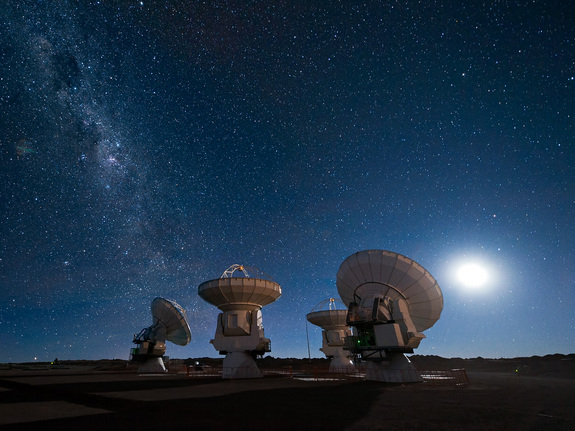Danish astronomers find sugar in the universe
A team of astronomers from the Niels Bohr institute in Denmark have detected sugar molecules in a gas cloud surrounding a young star only 400 light years from Earth, suggesting the possibility that life could evolve elsewhere in the universe.
The building blocks of living cells
The sugar molecules found is a simple form of sugar called glycolaldehyde, not much different to the sugar we put in coffee. While it is unclear exactly how glycoaldehyde is produced in space, the molecule is thought to play a key role in the chemical reaction that forms ribonucleic acid (RNA), a crucial biomolecule and building block in all living cells. This suggests that the precursors of biology can be present even before planets have begun forming.

Astronomers in Denmark have found simple sugar molecules (inset) around a sun-like star IRAS 16293-2422 located about 400 light years away in the Rho Ophiuchi star forming region, here shown in infrared light. Credit: ALMA (ESO/NAOJ/NRAO)/L. Calcada (ESO) & NASA/JPL-Caltech/WISE Team
The precursors of life
The epochal discovery was made using the powerful ALMA radio telescopes, which enable the researchers to study in details the composition of the gas cloud sorrrounding the star. Besides glycolaldehyde, the researchers also found signs of more complex organic molecules, including ethylene glycol, methyl format and ethanol.
"The complex molecules in the cloud surrounding this newly formed star tells us that the building blocks of life may some of first to be formed, says research leader Jes Jørgensen of the Niels Bohr Institute at University of Copenhagen in Denmark. "One of the big questions is whether it is common to form these organic molecules early in the formation of stars and planets and how complex they can get before they are incorporated into new planets. This may tell us something about the possibility that life could arise elsewhere and whether the precursors of biology are present even before planets are formed".
As the newborn star develops, it heats up the inner parts of the rotating cloud of gas and dust, warming it to about room temperature, explain the researchers. This heating process evaporates the chemically complex molecules and forms gases that emit radiation that can be picked up by the sensitive radio telescopes.
“What is really exciting about our findings is that the ALMA observations reveal that the sugar molecules are falling in towards one of the stars of the system,” says team member Cécile Favre. “The sugar molecules are not only in the right place to find their way onto a planet, but they are also going in the right direction", says member of the research team Cécile Favre of Aarhus University in Denmark

Astronomers found the sugar molecules using the Atacama Large Militeter/Submilimeter Array (ALMA) radio telescope in Chile.
Read more about the discovery on the website of the Niels Bohr Institute in Denmark
Published: 31.08.2012
- News
- New study residence scheme for foreign nationals who want to combine career and a master’s degree Jul 04, 2025
- Survival guide for international students Mar 25, 2025
- Almost 8,000 international applicants Mar 20, 2025
- The application deadline for 2025 is just around the corner Mar 06, 2025
- Live chat on applying for a higher education study programme in Denmark Jan 22, 2025
- Useful websites when preparing to study in Denmark Jun 13, 2024
- Application deadline for 2024 is approaching Feb 26, 2024
